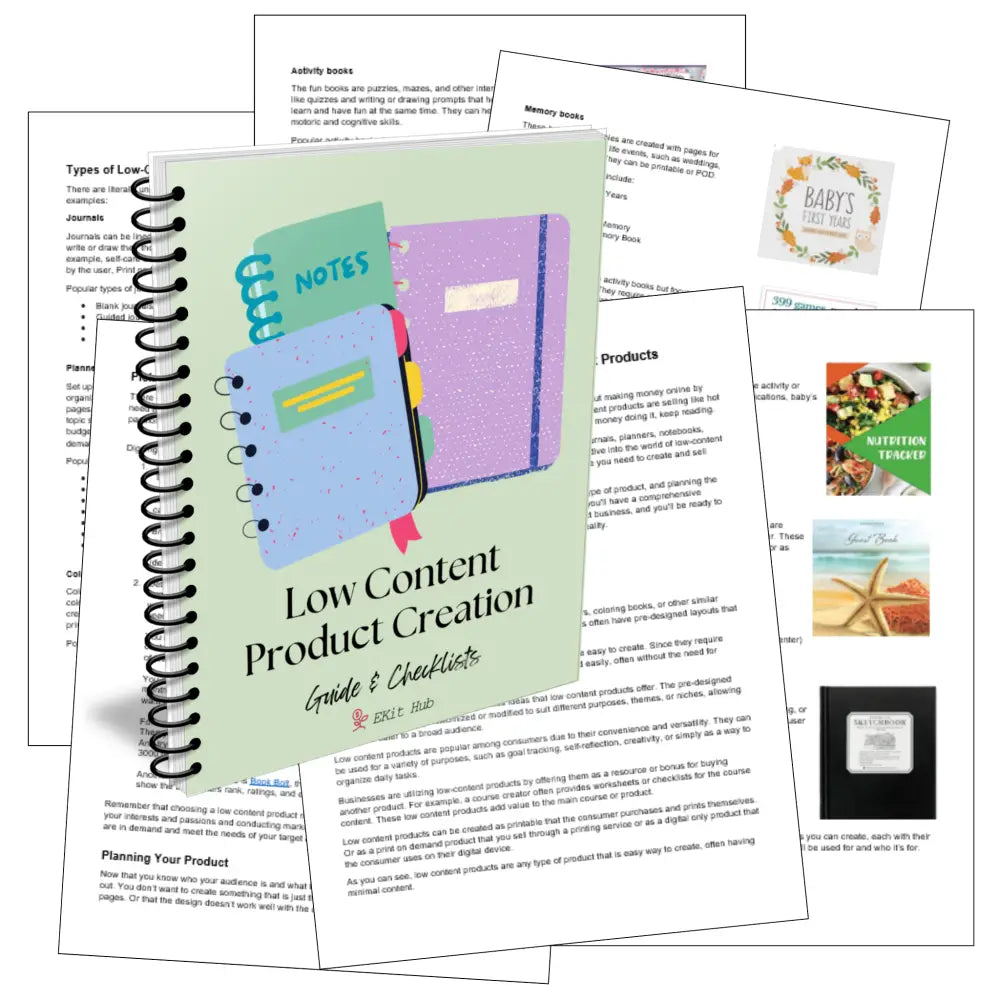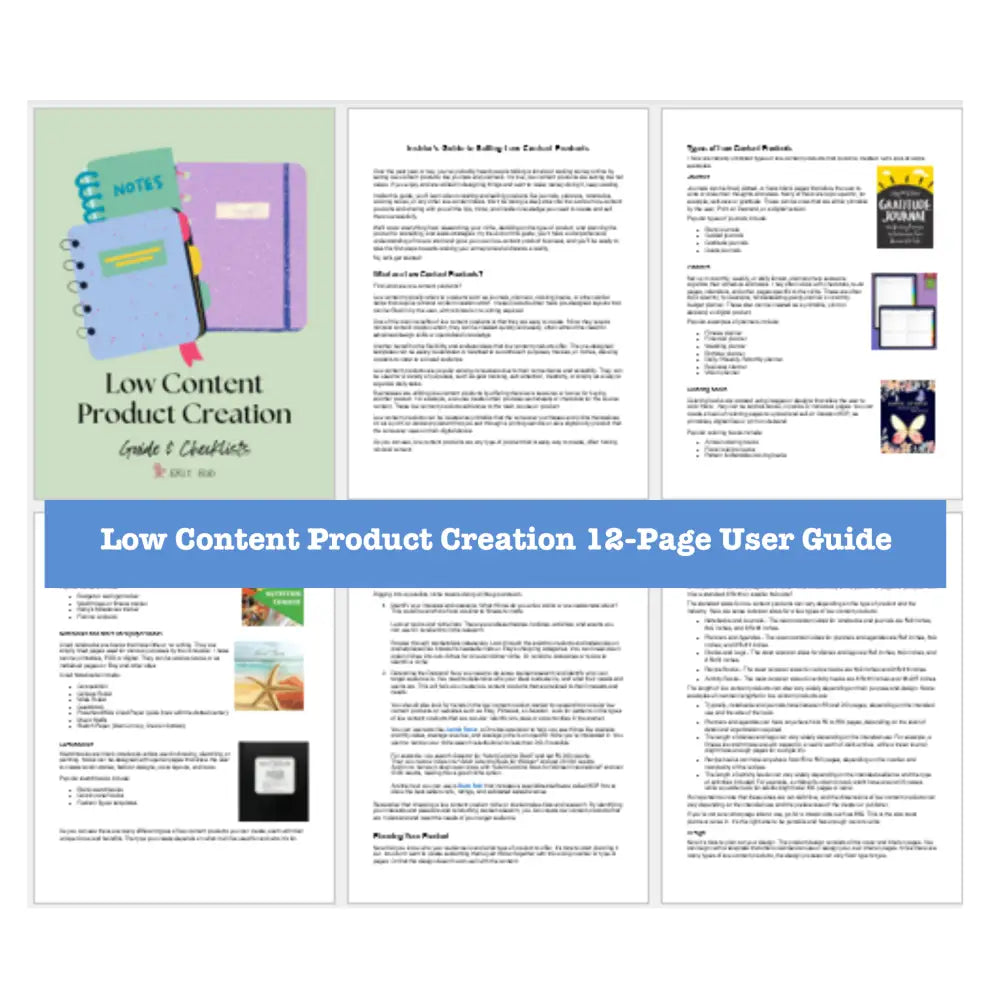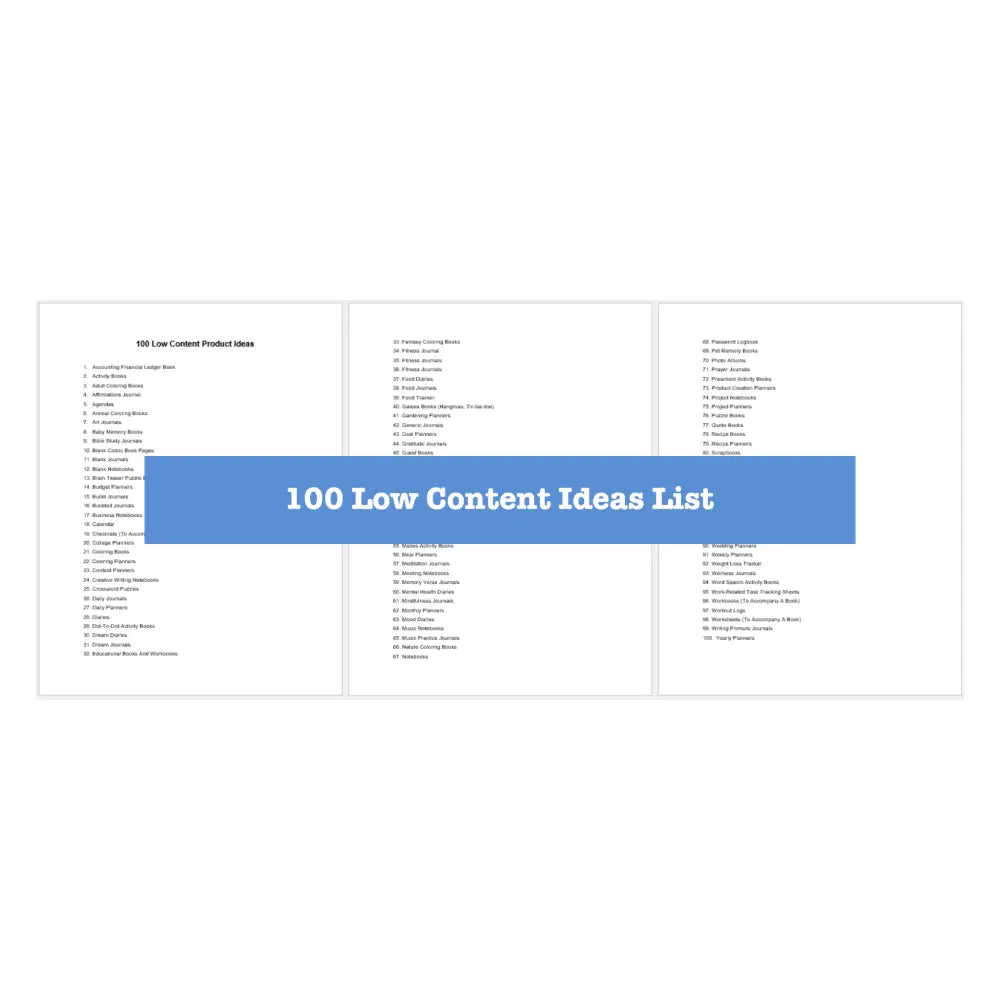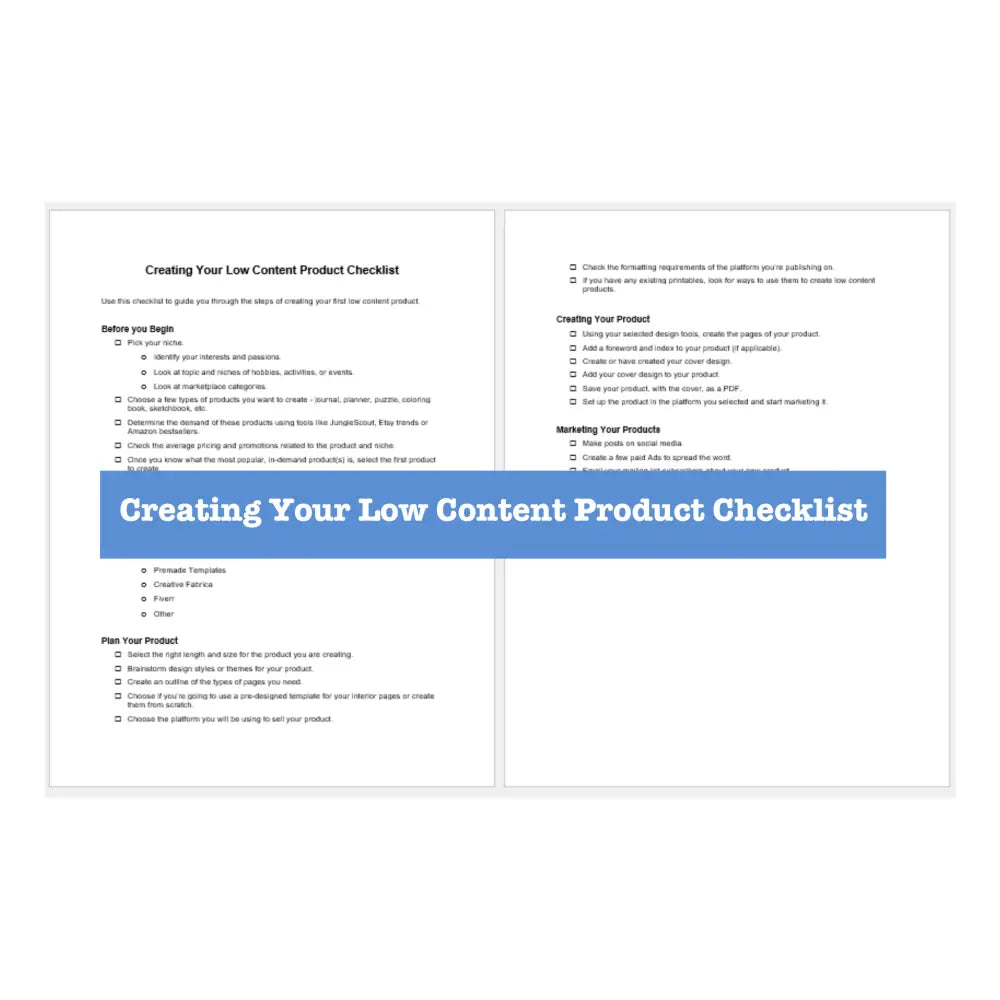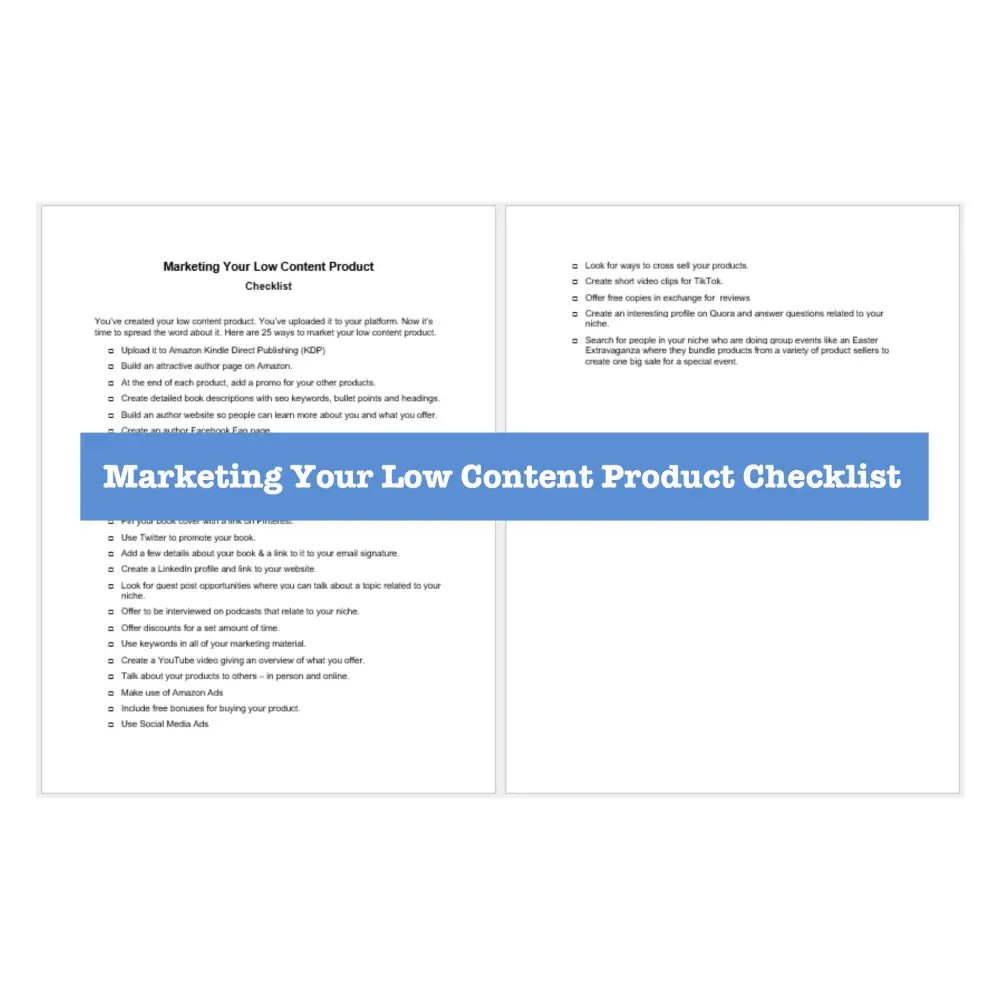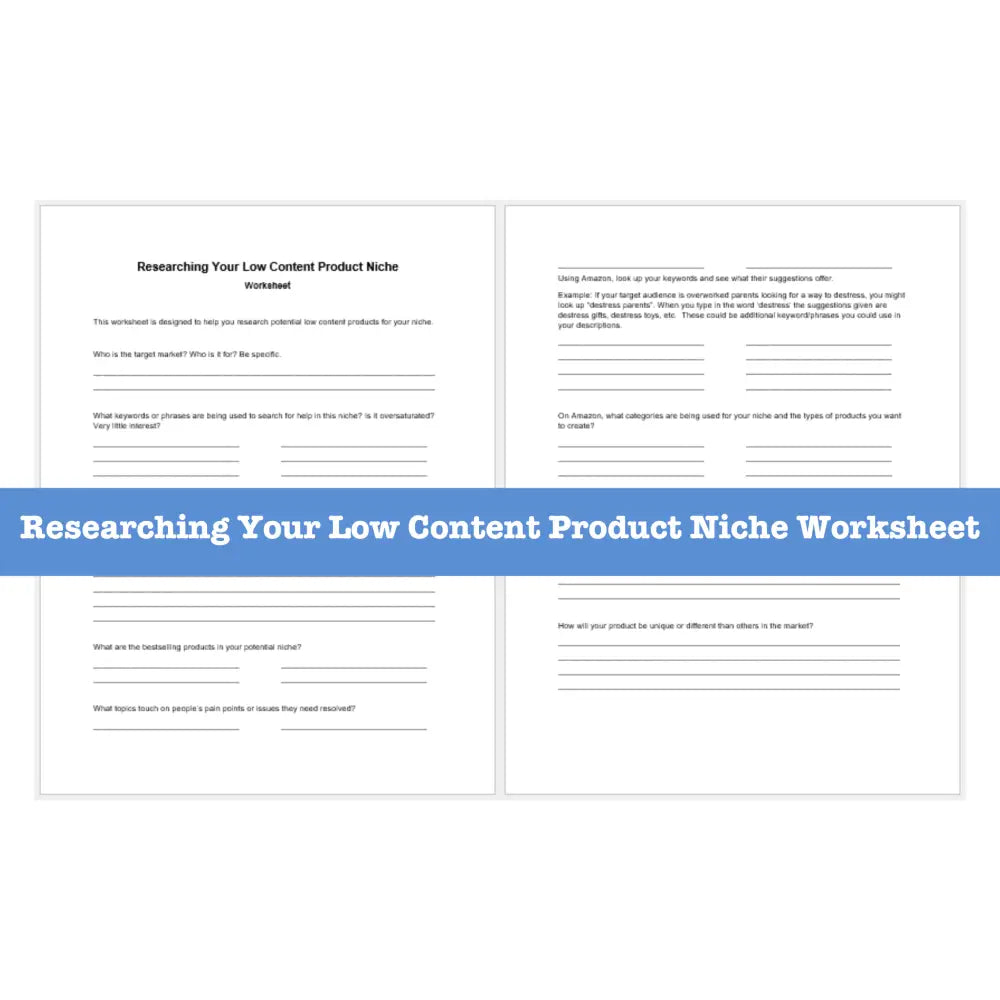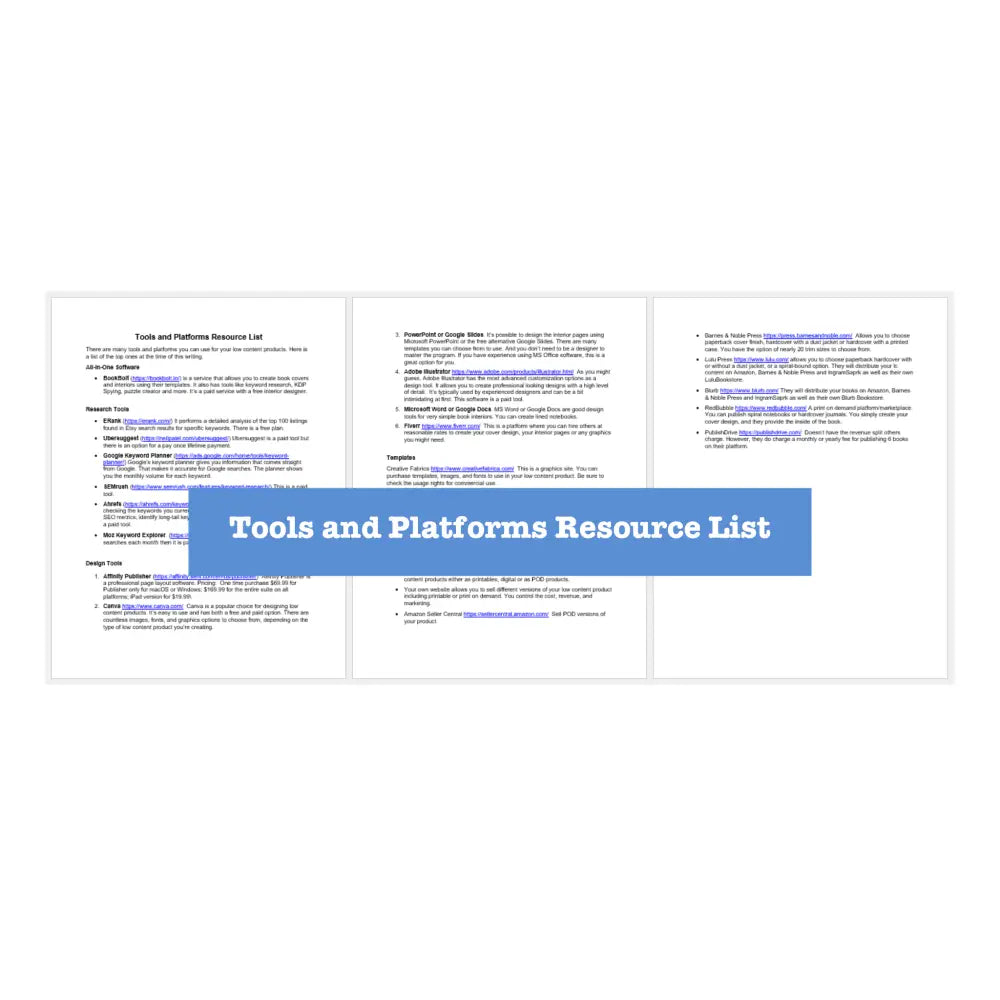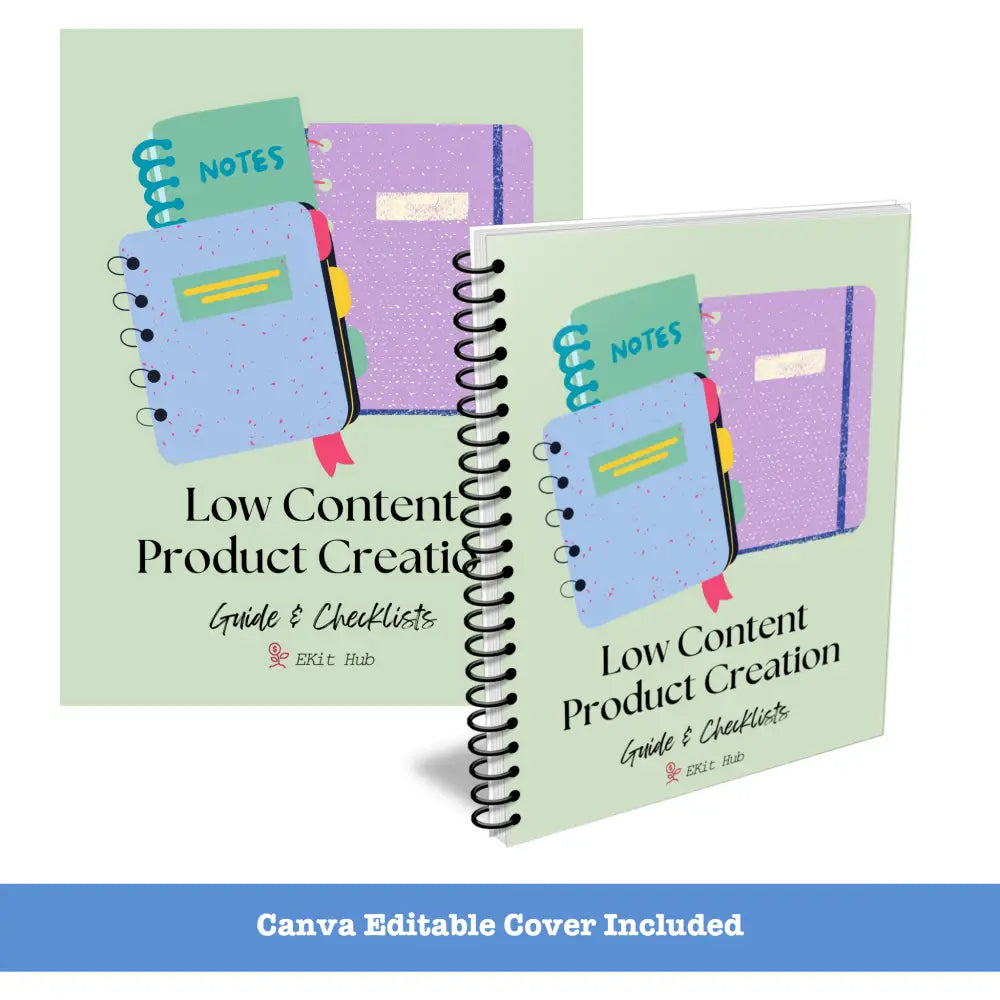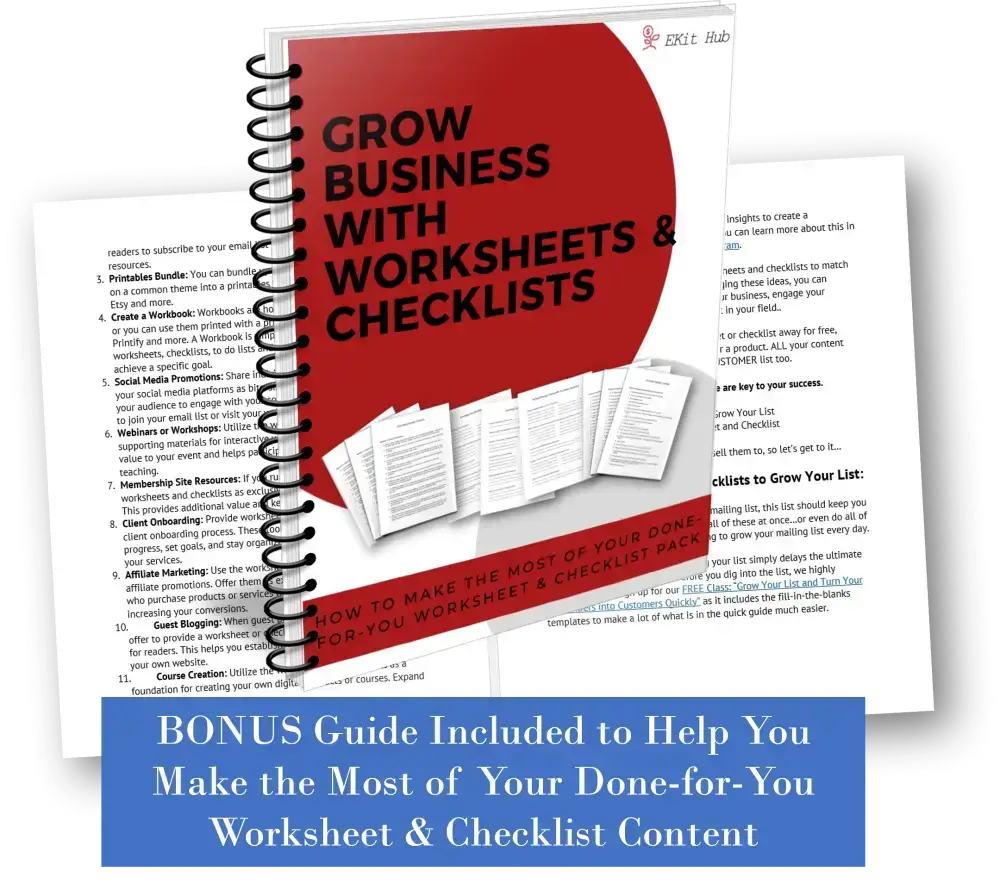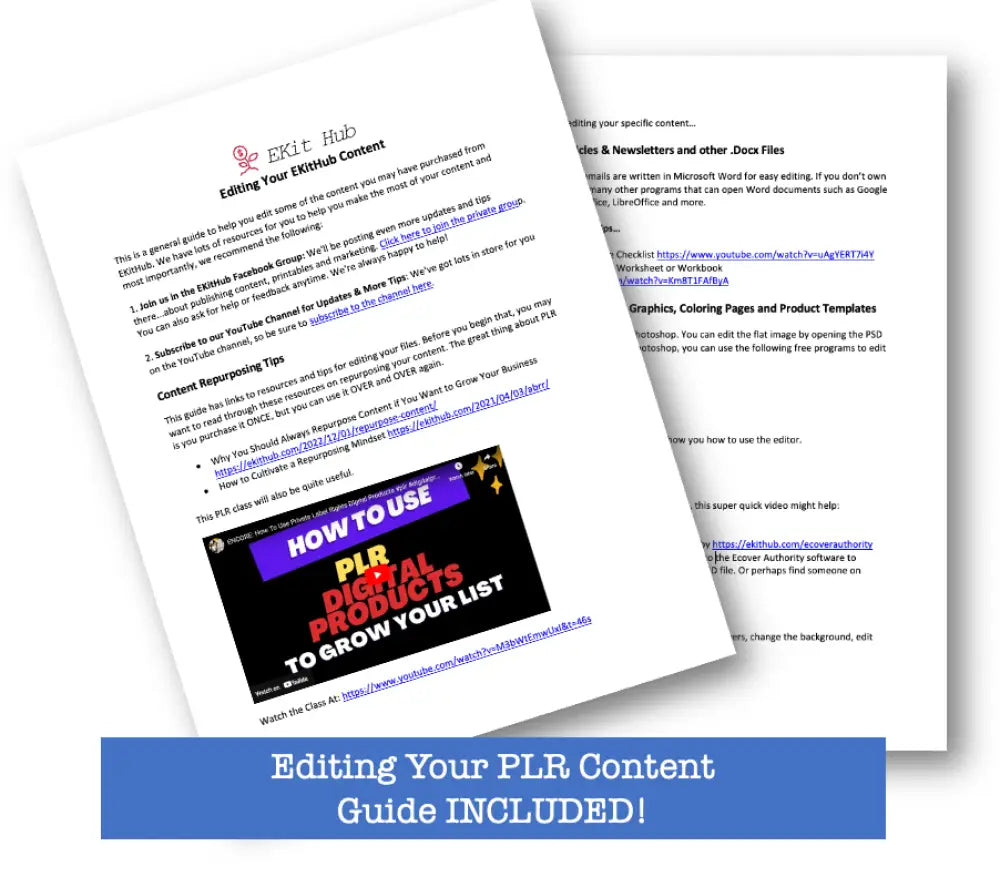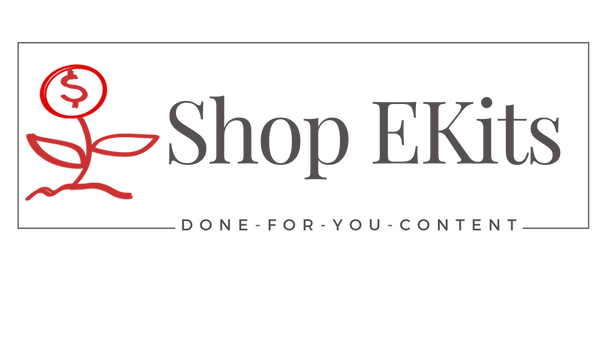EKitHub
Low Content Product Creation Guide + Checklists Pack
Low Content Product Creation Guide + Checklists Pack
Couldn't load pickup availability
"Low Content Product Creation Guide + Checklists" is a PLR package to help you or your customers research create and market your low content product ideas, these templates will show you how to do it and give you ideas and tools to use to make it simple.
These templates can help your customers and you get started right away.
Low Content Product Creation Guide
The 12-page user guide explains how to sell low content products. This guide covers: what are low content products, types of low-content products, picking a niche, planning your product, design tools, selling platforms and so much more!
Templates Include:
-
100 Low Content Product Ideas - Use this list to get you started thinking about what products would be perfect for your niche.
-
Creating Your Low Content Product Checklist - Use this checklist to keep you on track when deciding how and which traffic building techniques to use.
-
Marketing Your Low Content Product Checklist - Here are 25 ways to market your low content product.
- Researching Your Low Content Product Niche Worksheet - This worksheet is designed to help you research potential low content products for your niche.
- Tools and Platforms Resource List - There are many tools and platforms you can use for your low content products. Here is a list of the top ones at the time of this writing.
YES, Private Label Rights Use Included! Our ShopEKits.com Business-Building Templates come with PLR rights, so that means you can use them in your own business, but can also share them with your customers and clients, with our usual terms of use and license.
Files Included in your PLR template package:
- 1 guide in .docx format
- 1 guide in PDF format (can be uploaded to Canva)
- 5 template files in .docx format
- 5 template files in PDF format
- Cover graphic in PNG format
- Cover graphics with an editable Canva template link
Using the PLR Content for Your Business? Some Ideas for Using Your Content:
- Edit the templates as much as you'd like, so it works with your business.
- Print the guide and take the time for deep brainstorming.
- Save your templates in a binder, so you can refer to it later and use ideas you haven't explored yet.
- Be sure to join us in the EKithub Facebook Group if you haven't any questions about implementing the templates in your business. We are always happy to help.
Sharing with Customers and Clients? Some Ideas for Using Your Content:
- Edit the templates as much as you'd like.
- Save your completed templates in a binder, so you can refer to it later and use ideas you haven't explored yet.
- Save the templates in a marketing folder on your computer, so that you can use reprint and use it anytime you need.
- Be sure to join us in the EKithub Facebook Group if you haven't any questions about implementing the templates in your business. We are always happy to help.
If you plan to share the content, we've also included this useful extra with personal use only...
- "How to Grow Business with Worksheets and Checklists" Insider's Guide. This guide helps you with:
- 10 ideas for publishing your worksheets and checklists
- Using worksheets and checklists to grow your list, including 8 ways to promote your free offer
- How to turn your worksheet and checklists into a workbook for sale
- How to turn your worksheet and checklist into a course for sale
- How to turn your worksheet and checklist into a printables bundle for sale
- How to get access to our complete and free email marketing course + templates
- How to get ongoing help and support in using your content, creating products and marketing your business
- Tips for editing your content
- Terms of use / license certificate
Wanting to Create Low-Content Products and Stuck at Where to Start?
You’ve probably heard people talking a lot about making money online by selling low-content products like journals and planners. It’s true, low content products are selling like hot cakes.
Creating low content products can be a strategic move for businesses looking to expand their offerings and reach new audiences. Low content products typically include items such as journals, planners, coloring books, notebooks, or activity books that require minimal textual or graphical content from the creator.
Inside this guide, you’ll learn about creating and selling products like journals, planners, notebooks, coloring books, or any other low-content items. We'll be taking a deep dive into the world of low-content products and sharing with you all the tips, tricks, and insider knowledge you need to create and sell them successfully.
Here are several reasons why you should consider creating low content products for your business:
- Ease of Creation: Low content products require relatively low effort and resources to create compared to more complex products. This allows businesses to quickly develop and launch new products without significant time and financial investment.
-
Diverse Product Line: Offering low content products can help diversify a business's product line. This variety can appeal to a broader audience and increase the potential for sales across different customer segments.
-
Complement Existing Offerings: Low content products can complement existing products or services. For example, a business that offers productivity tools might create a planner or notebook that aligns with its brand and offerings, providing customers with additional value.
-
Low Risk: The lower production cost and effort involved in creating low content products mean there is less financial risk for the business. If a particular product doesn't perform well, the impact on the business is minimal.
-
Recurring Sales: Low content products, such as planners or journals, are often consumable and may require regular replenishment by customers. This can lead to recurring sales and a steady stream of revenue.
-
Customization Opportunities: Businesses can offer personalized or branded low content products, allowing customers to customize their purchases to suit their preferences. This can increase customer satisfaction and loyalty.
-
Market Expansion: Low content products can help a business enter new markets or reach different audiences. For example, coloring books for adults can tap into the wellness market, while planners and journals may attract productivity-focused customers.
-
Cross-Promotion: Low content products can be used as promotional items to cross-promote other products or services offered by the business. For example, a business might offer a free journal with a purchase to introduce customers to its low content products.
-
Leveraging Brand Recognition: Established businesses can leverage their brand recognition to market low content products. This can help boost sales and increase the visibility of the new product line.
- Scalability: Once a low content product is designed and set up for production, it can often be easily scaled up to meet demand. Digital distribution of low content products, such as printables, also offers scalable opportunities.
Creating low content products can be a strategic move for businesses looking to diversify their offerings, reach new markets, and drive recurring sales. The low risk and ease of creation make low content products an attractive option for businesses looking to expand their product line.
Understanding Your Private Label Commercial-Use Rights:
- Please review our terms of use and license information here.
- Please note the bonuses do not include private label rights.
